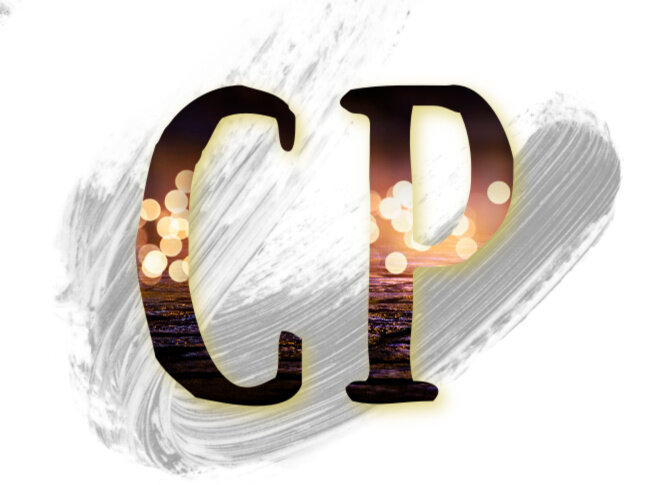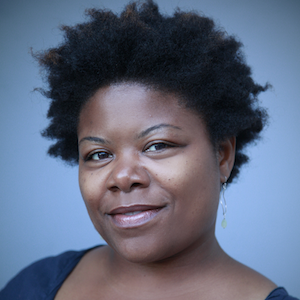Women Center Stage - An Interview with Monica L. Williams, Felice Belle and Jen Murphy
“Together/Far Apart showcases 3 pairs of poets and their journey together as they navigate a myriad of relationships while negotiating art-making, time, family, space and dreams. Can they maintain good relationships while meeting industry expectations and negotiating the hustler? Think the 'Real World' meets'The Voice' – but the only competition is for love. Jennifer and Felice's set includes spoken word, prose, monologue, and dialogue back and forth."
Featuring 3 pairs of poets as 'living installations'; Dominique Morisseau and Jimmy Keys, Felice Belle and Jen Murphy, the poetry of Mahogany L. Browne with Katherine O. George. Interludes performed by Yadira De La Riva, Ryan F Johnson, and Clifford Douillard."
Monica L. Williams shares some of the show's history and her thoughts on female artists working in and out of the theater.
Growing up, my mom would take us to museums – I love them! I particularly grew fond of installations - the feeling of having a 'lived experience' that I walk through at my own pace in relationship with the art and my family.Women Center stage asked me to present a small poetry show and I thought why not think big and grow from there. Women think big often, juggle multiple things at once, show up as mothers, sisters, friends, collaborators, managers, directors — why not take a risk and design a type of poetry show that's like an installation for artists to walk through with their art and family.I have great artist friends - lots of poets, writers, storytellers — that have become my NY family. We try our different selves out on each other and have witnessed transformations as 'life happens' personally and professionally. Together/Far Apart is a way for us to notice how we make great art, navigate distance, time and space, and have a healthy family life. It's more than a conversation of work/life balance — sometimes imbalance is necessary. This testimony of what exists between two artists who love each other as couples, sisters and mentors has no 'right or wrong' way of being - it just is. And we get to notice or say amen or not, snap our fingers, laugh or cry, or just watch.Women artists are powerful, women artists are diverse and most times, the containers of the theater are not wide enough. So we create new containers, define our own guidelines and, non-apologetically, create art that reflects our community and our legacy.
Jen Murphy shares her thoughts on work/life balance.
I think most artists and non-artists (if there are such a thing) struggle with work/life balance, particularly in an ambition-centric city like New York. It is often tersely said that in Europe people work to live, and in America, we live to work. In other parts of the world there is often greater value — socially, culturally, and economically — placed on creating and maintaining a family, which some might call the ultimate work of art. But even here there is difficulty in balancing creative work with the work of the spirit and heart — showing up for sick friends, for instance, building new friendships, visiting relatives, deepening one’s connection with nature, taking time out of a hectic work schedule to be in solitude or with loved ones. For me, art is a viable place to find balance; to explore what it means to reconnect with all that a typical work life asks us to forget: emotions, namely, and the fact of having a complex and layered human experience. Art is a place where, if we are lucky, we can allow our masks to fall off and let others see us in a new light.I think most artists and non-artists (if there are such a thing) struggle with work/life balance, particularly in an ambition-centric city like New York. It is often tersely said that in Europe people work to live, and in America, we live to work. In other parts of the world there is often greater value — societally, culturally, and economically — placed on creating and maintaining a family, which some might call the ultimate work of art. But even here there is difficulty in balancing creative work with the work of the spirit and heart — showing up for sick friends, for instance, building new friendships, visiting relatives, deepening one’s connection with nature, taking time out of a hectic work schedule to be in solitude or with loved ones. For me, art is a viable place to find balance; to explore what it means to reconnect with all that a typical work life asks us to forget: emotions, namely, and the fact of having a complex and layered human experience. Art is a place where we can allow our masks to fall off and let others see us in a new light.
Felice Bell shares her thoughts on the play, gender bias in the theater and if women can "have it all." What inspired you to do this play? How did you get involved in Women Center Stage?
Monica, Jennifer, and I had been talking about doing a show together for at least a year. When Monica was selected to be a part of the Women Center Stage festival, she asked us to be a part of it. I said yes, without hesitation, because I adore Monica, as a friend and a director. She’s directed several of my plays and I trust her with my words.
Your play addresses the struggle of a work/life balance. What are your views on how that balance is portrayed currently in the media and entertainment? What do you think needs to change regarding that portrayal?
I think it’s interesting that every few months, there’s some “news” story about whether or not women can have it all. No one ever asks if men can have it all. It’s a given. But specifically in terms of media portrayals of women, there is the idea that you can have a successful career or be a mother. You can be really dedicated to your art or you can have a healthy relationship. But try to do both, and hijinks ensue. As if women have not been doing it all, for ages. I know women who work and create and love and raise kids. And yes, it’s a challenge, but they wouldn’t have it any other way. More than anything, I’d like to see more honest, more realistic media representations of women’s lives.
Your play also addresses remaining true to one's voice as an artist. Please tell me your thoughts on that, especially with regard to women. So many plays and stories are told by men. What do you think prevents women from telling their stories? If more women could tell their stories, what do you think would change? Two women just won Best Director at the Tony Awards - only the second time a woman has won Best Director of a Musical. Why do you think that is the current state of things? We see so many more plays written by men than by women onstage. Why do you think that is the current state of things? Please tell me your thoughts about the roles women currently play in theatre and the roles you hope to see them play in the future.
I think it’s a question of evolution. Historically speaking, women’s voices have not been valued in the same way that men’s voices have. So when we say, there are a lack of women’s voices in the theater, I think it’s less a comment on theater and more so a comment on society.A few years ago there was a big study about gender bias in theater. One of the more interesting findings was that female artistic directors and literary managers gave a significantly lower rating to a script that listed a female playwright than they gave to the identical script when it had a man’s name on it. So it’s not solely a matter of men being the gatekeepers and keeping women out, it’s also a matter of how women in theater view each other. I believe that the inclusion of more female voices in the theater would mean that audiences get to see a broader range of human experience and emotion, which seems like it would benefit the art form as a whole.
Together/Far Apart is performed July 27 at 8 PM.

